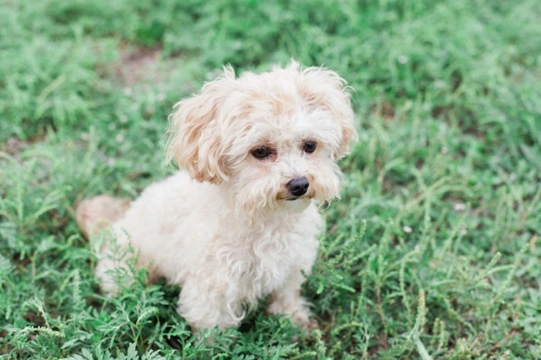
10 things you need to know about the Maltipoo before you buy one
The Maltipoo is an adorable and very charming small dog type that looks very similar to any number of other petite, fluffy dog breeds and types and that often (but not exclusively) have white coats.
If you’re considering buying a Maltipoo, you’re in good company – this is a very popular dog type in the UK, and is in fact in the top 25% of dog breeds and types ranked by popularity, based on the number of adverts placed on a breed by breed basis on Pets4Homes in the last year.
However, before you can make an informed decision about buying a Maltipoo, you need to ensure you know what you’ll be getting yourself into, and that the dog has the right traits to match your lifestyle to ensure that you’ll get on well and be happy together.
Finding out about pedigree dog breeds is generally quite simple, but when it comes to dog types like the Maltipoo, which is a hybrid crossing, it is not always so easy.
With this in mind, this article will tell you ten things you need to know about the Maltipoo, before you go ahead and buy one of your own. Read on to learn more.
1. The Maltipoo is not a pedigree dog breed
First of all, the Maltipoo is a hybrid or cross breed, and they’re not a pedigree breed in its own right. The Maltipoo’s two parent breeds are the poodle (toy or miniature) and the Maltese dog respectively, and a Maltipoo may be bred from the crossing of one dog of each breed, or from later generations.
The Maltipoo is not recognised by the Kennel Club and is not eligible for Kennel Club registration.
2. They can be prohibitively expensive to buy
Rarely does the average cost of a non-pedigree dog type exceed that of similarly sized comparable pedigree breeds, but the Maltipoo is a notable exception.
The Maltipoo can be prohibitively expensive to buy and falls outside of the budget of many would-be owners, with the average advertised price per Maltipoo puppy for sale here on Pets4Homes being around the £1,188 mark.
3. They’re moderately intelligent
The two parent breeds in the Maltipoo’s ancestry have quite a wide gap between their respective intelligence levels, with the poodle being the second most intelligent dog breed overall, and the Maltese falling much further down the list.
This places the average Maltipoo around the middle of the pack, which actually has some advantages, and means that dogs of this type are generally not overly challenging to train, can learn a reasonable range of commands, and tend to be fairly reliable in following them.
4. Maltipoos are not generally happy without company
The Maltipoo is a very loving and personable dog, and they won’t be happy without company for the greater part of the day. Any dog should be able to be trained to stay alone for at least a couple of hours without becoming distressed or making a huge fuss, but the Maltipoo is not a dog to pick if you intend to leave your dog for longer periods of time regularly.
5. The Maltipoo is relatively long lived
Hybrid dog types have the benefit of hybrid vigour, which means that they’re less likely to inherit the hereditary health issues that are present within either of their two parent breeds. This is never a guarantee of a long life or good health, but the Maltipoo’s average lifespan ranges from around 12-15 years, and so they are relatively long lived as a rule.
6. Their coats are generally low-allergen, but this is not guaranteed
The poodle coat is tightly curled and low-shedding, which means they don’t drop a lot of hair and so are less likely to trigger allergies in people sensitive to them than most other dog types.
The Maltipoo may inherit this trait, although their coats may also tend more towards the Maltese side, so this is no guarantee.
Every dog should be considered on its own merits, and you cannot assume that a Maltipoo will be a good pick for every allergy sufferer!
7. Their coats are also high maintenance
The Maltipoo coat requires daily brushing and grooming to keep it in good condition, and without regular maintenance they are apt to get knotted up and tangled.
If you’re not keen on brushing and grooming your dog and/or don’t want to take them to a groomer regularly, this might not be a good fit for you.
8. Maltipoos are small, but exact size can be variable
The Maltipoo is a small dog type, but as their poodle parentage may be either a toy or a miniature poodle, their exact size can be variable. It is wise to find out beforehand which poodle variant was used to produce any Maltipoo you are considering, and also to bear in mind that you can’t tell the adult size of a dog until they are finally fully grown!
9. They aren’t the best breed for homes with young children
The Maltipoo is generally not considered to be an ideal pet for homes with very young children, as they may find young children stressful, as well as becoming jealous.
This may make the dog unhappy, and might even result in their being snappy towards children.
10. The Maltipoo can be a good fit for a first-time dog owner
The Maltipoo can be a good choice for a first-time dog owner who does plenty of research before making a purchase, and that understands how to care for and manage a Maltipoo effectively. They’re not a hugely challenging dog type but every dog has its pros and cons, and so you need to find out as much as possible before you rule the Maltipoo in or out of your selection process.



